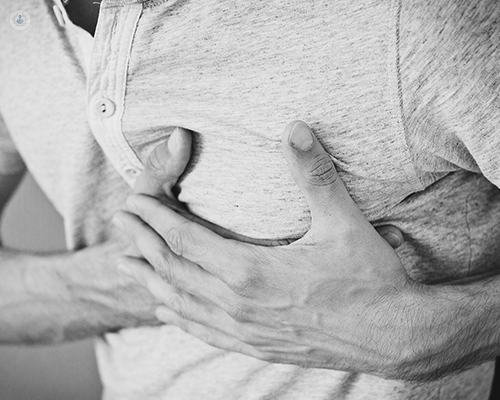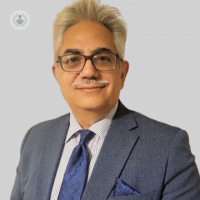How LVAD addresses the complexities of severe heart failure
Escrito por:In the realm of cardiac care, the Left Ventricular Assist Device (LVAD) stands out as a remarkable technological innovation designed to address the complexities of severe heart failure. Serving as an artificial heart pump, the LVAD plays a pivotal role in supporting individuals whose weakened hearts struggle to pump an adequate amount of blood, thereby offering a lifeline to those facing uncertain survival while awaiting a heart transplant. In his latest online article, Mr Espeed Khoshbin delves into the intricacies of why certain individuals require an LVAD, its function, impact on patients' lives, and the evolving landscape of LVAD technology.

Why do certain individuals require a left ventricular assist device (LVAD)?
An LVAD serves as an artificial heart pump, specifically designed to address severe heart failure. It is occasionally implanted in individuals awaiting a heart transplant. This is called bridging to transplantation. An LVAD may also be used as a definitive treatment so-called destination therapy. In normal circumstances, the left ventricle, one of the heart's four chambers, pumps blood into the aorta, facilitating its circulation throughout the body. However, in cases of severe heart failure, the weakened heart struggles to pump an adequate amount of blood, necessitating intervention. If their survival until a suitable donor heart becomes available is uncertain, patients being considered for a heart transplant may be candidates for an LVAD.The device supports the failing heart, aiming to restore normal blood flow.
Is an LVAD recommended for everyone with heart failure?
While not all individuals with heart failure are candidates for an LVAD, the device can be a life-saving measure, providing crucial time for patients until a suitable donor heart is found. Heart failure often arises from conditions such as a heart attack or cardiomyopathy, where the heart muscle is diseased. For patients with severe heart failure that cannot be managed through medications or other treatments, a heart transplant may be considered. However, for those at risk of deteriorating while awaiting a donor heart, implanting an LVAD can be a life-saving interim solution. In patients that are not candidates for heart transplantation LVAD may be used as destination therapy (DT). LVAD could potentially be a good option which would restore cardiac output and improve both prognosis and quality of life. DT therapy is a proven treatment for advanced heart failure. Current median survival following LVAD therapy is more than 5 years survival (MOMENTUM III study).
How does the LVAD function?
Implanting an LVAD involves a significant open-heart surgery, wherein one end of the LVAD pump is attached to the left ventricle, and the other end is connected to the aorta. Blood flows from the ventricle into the LVAD, which then pumps the blood into the aorta, facilitating its distribution throughout the body. The device is connected to an external controller through a fine cable called the driveline, and the controller, in turn, links to an external battery pack.
How reliable is the LVAD's battery power?
Due to the critical nature of the device, LVADs are designed to be extremely reliable, incorporating built-in safety systems. In case of a low battery, an alarm signals the need for a replacement. Additionally, a backup battery is always connected to the controller, ensuring continued LVAD functionality. With backup circuitry in place, modern LVADs offer high reliability, supporting patients for years. Users can choose different ways to carry the controller and batteries, enhancing flexibility and convenience in their daily lives.
How do LVADs impact patients' lives?
Patients considered for an LVAD typically experience a significantly compromised quality of life before the procedure, marked by fatigue, weakness, and breathlessness. Following implantation, normal blood supply is restored, alleviating heart failure symptoms. Many patients regain the ability to engage in daily activities, including walking, driving, and even returning to work.
How do LVADs serve as a bridge to transplant?
Given the prolonged wait for a heart donor, an LVAD may be employed to sustain an individual until a suitable match is found. Paradoxically, some patients improve to the extent that they become lower priorities on the transplant list, as they are deemed less urgent than those without the device. Notably, LVADs have supported patients for extended periods, with survival rates reaching 80–85 per cent after one year and 70–75 per cent after two years.
What lies ahead for LVAD technology?
Advancements in technology over the past decade have led to more sophisticated LVADs. Anticipated improvements in this technology holds promise for enhanced convenience and reduced risks associated with external components. Looking ahead, having an LVAD fitted could emerge as a viable alternative to a heart transplant.
Mr Espeed Khoshbin is an esteemed consultant cardiac surgeon. You can schedule an appointment with him via his Top Doctors profile.


